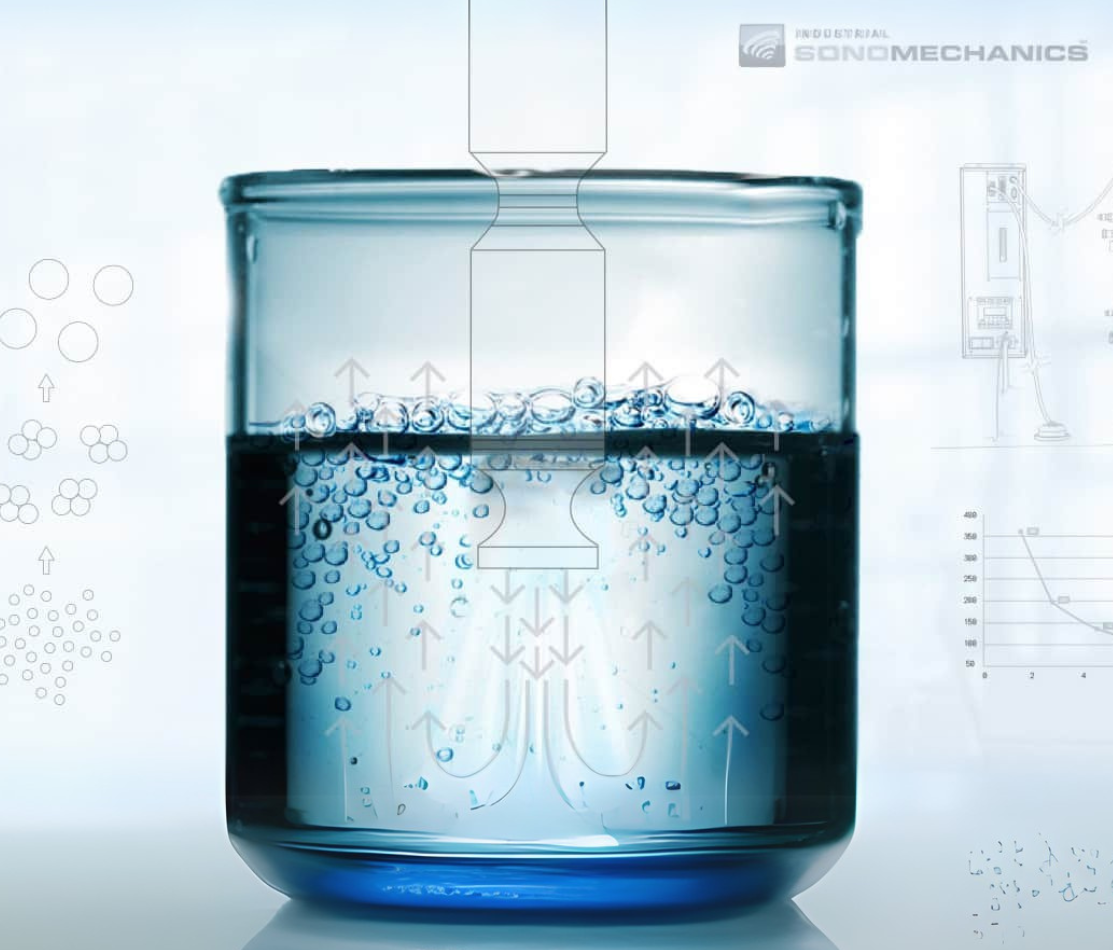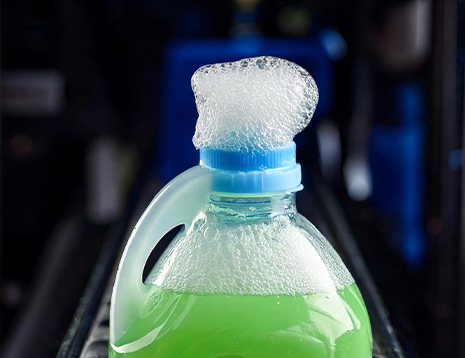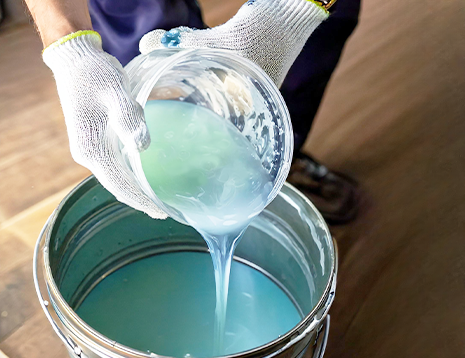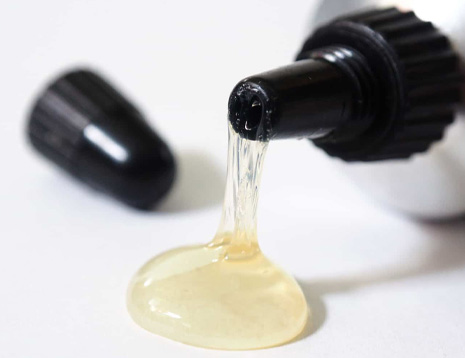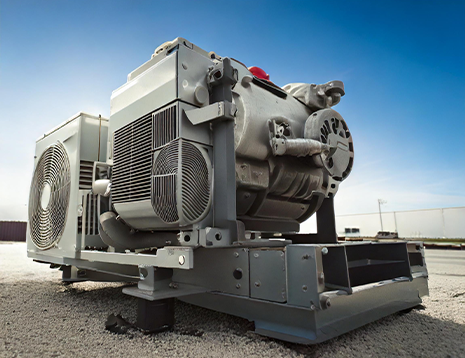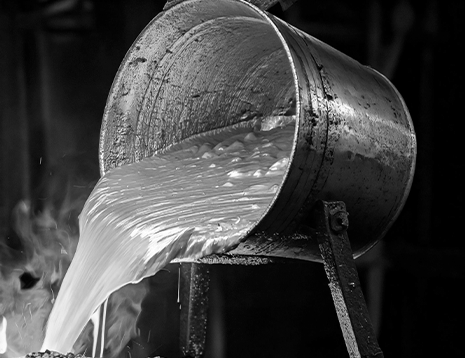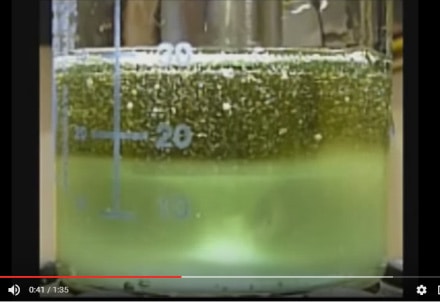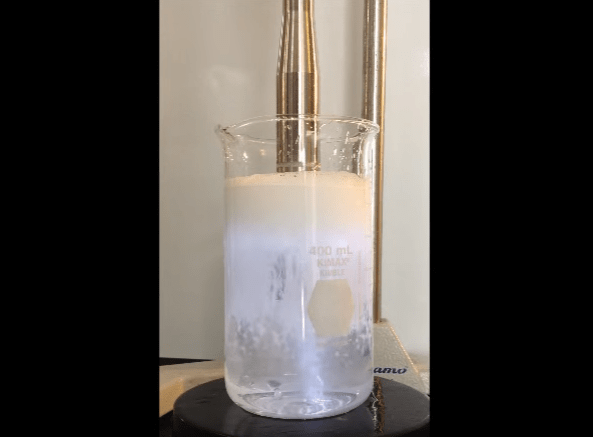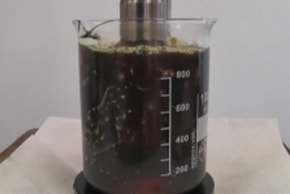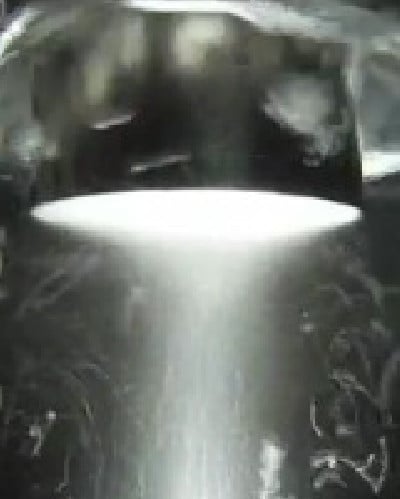- Efficient removal of dissolved gases (e.g., oxygen), entrained bubbles, dissolved/emulsified water.
- Applicable for beverages, pharmaceuticals, fuels, oils, waxes, epoxies, coatings, polymer melts, and more.
- Operates in continuous-flow mode for seamless in-line integration into high-volume applications.
- Based on proprietary BHUT technology, available exclusively from ISM.
Overview
Ultrasonic degassing is a highly efficient method for removing dissolved gases (e.g., oxygen) and entrained bubbles (e.g., air) from various liquids, including wine and other beverages, pharmaceutical and nutraceutical products, fuels, silicone and other oils, candle waxes, metal and polymer melts, epoxies, adhesives, coatings, inks, paints, emulsions, and more. This technique can also simultaneously remove dissolved and emulsified water from transformer, hydraulic, motor, and other oils.
Unlike conventional methods like vacuum degassing or inert gas sparging, ultrasonic degassing, as offered by ISM, operates in a continuous-flow mode, enabling seamless in-line integration into industrial processes, supporting high-volume applications, and allowing precise temperature control. ISM is the only company offering in-line, industrial-scale ultrasonic degassing equipment, utilizing its proprietary Barbell Horn® Ultrasonic Technology (BHUT).
Improve Oxidative Stability of Pharmaceutical Products
- Dissolved oxygen removal is critical in pharmaceutical, biotechnology, and nutraceutical products to prevent oxidative degradation of APIs, proteins, enzymes, and other bioactive ingredients.
- Methods like nitrogen sparging, vacuum packaging, and membrane degassing are inefficient, costly, and difficult to integrate into continuous processes.
- ISM’s in-line ultrasonic degassing technology enables efficient, continuous oxygen removal in flow-through systems, improving product stability and process scalability.
Increase Quality and Longevity of Foods & Beverages
- Dissolved gases in foods and beverages lead to oxidation, bacterial growth, and spoilage, compromising product quality and reducing shelf life.
- Trapped bubbles cause inconsistencies in texture and liquid levels, affecting product appearance and uniformity, especially in bottled beverages.
- Existing degassing methods are often inefficient, unable to fully remove gases, and difficult to integrate into continuous production processes.
- ISM in-line ultrasonic degassing systems provide continuous, efficient removal of gases and bubbles from liquids, enhancing product consistency, extending shelf life, and ensuring superior quality in food and beverage production.
Enhance Smoothness and Burn Quality of Candles
- During candle production, liquefied wax readily absorbs atmospheric gases. When the wax solidifies, trapped gases cause bubble formation, leading to visual defects, uneven burning, and impaired scent release.
- Traditional solutions like vacuum degassing or mechanical stirring struggle to fully remove the gases from wax, resulting in inconsistent quality and increased production costs.
- ISM’s in-line ultrasonic degassing systems rapidly remove absorbed gases from liquefied wax. This process minimizes bubble formation during solidification, leading to a smoother appearance, better scent diffusion, and consistent burn quality, enhancing both the visual and functional aspects of candles while streamlining production.
Increase Hydraulic Efficiency and System Reliability of Break Fluid
- Brake fluid absorbs moisture and traps gases, leading to reduced hydraulic efficiency (poor pressure transmission) and compromised system reliability (lower boiling point and risk of vapor lock).
- Pressure bleeders with vacuum assistance currently used to degas and dehydrate the fluid are slow and do not remove all contaminants.
- ISM’s in-line ultrasonic degassing and dehydration solution offers faster and more thorough removal of gases and moisture, improving hydraulic efficiency and system reliability by ensuring better pressure transmission and reducing the risk of vapor lock.
Improve Bottle Filling Processes for Products Prone to Foaming
- In the bottling process, certain liquids—such as beverages, detergents, and foaming agents—tend to produce excess foam. This disrupts filling accuracy, causes product waste, and creates delays in the filling line.
- Standard solutions are to use slower fill rates, anti-foaming additives, or mechanical defoamers, but these approaches can compromise product quality, increase costs, and slow down production.
- ISM’s in-line ultrasonic degassing and deaeration solution effectively reduces foam formation during bottling by preemptively removing dissolved and entrained gases from these liquids. This enables faster, more accurate filling, ensuring consistent bottle levels without additives, improving production speed, reducing waste, and enhancing overall product quality.
Augment Oxidative Stability and Performance of Fuels & Oils
- Fuels and oils naturally absorb atmospheric oxygen, which causes their oxidation, leading to insoluble deposits, reduced performance, and shorter shelf life.
- Typical solutions involve adding oxygen scavenger chemicals, sparging with inert gases or using low-oxygen storage methods, but these approaches are often costly, require constant monitoring, and offer only limited improvements.
- ISM’s in-line ultrasonic deoxygenation technology efficiently removes dissolved oxygen from fuels and oils, directly addressing the root cause of oxidation. This process enhances oxidative stability, prolongs shelf life, and improves performance consistency, leading to more efficient fuel and oil products and reducing maintenance needs over time.
Ensure Bubble-Free Appearance of Coatings, Paints & Varnishes
- Coatings, paints, and varnishes tend to trap air during mixing and application, leading to bubble formation that compromises appearance, smoothness, and adhesion as well as weakening the protective properties of the finished product.
- Traditional methods, such as slow mixing, vacuum degassing, or anti-foaming agents, typically fall short in fully removing bubbles, leading to inconsistent results, longer processing times, higher costs, and product waste.
- ISM’s in-line ultrasonic degassing/deaeration equipment effectively removes trapped air bubbles and dissolved gases from these products, ensuring a smooth, defect-free finish that enhances both aesthetic quality and protective performance, while also increasing production efficiency and reducing material waste.
Improve Finish and Strength of Epoxies & Adhesives
- During mixing and application, epoxies and adhesives often trap air, leading to bubbles that compromise bond strength, durability, and finish quality. These trapped bubbles weaken the adhesive properties and create a rough, uneven surface.
- Conventional methods like slow mixing, vacuum degassing, or using anti-bubble additives are time-consuming, typically do not fully remove bubbles, and can introduce variability in adhesive performance, increasing production time and costs.
- ISM’s in-line ultrasonic degassing/deaeration technology effectively eliminates trapped air and dissnolved gases in epoxies and adhesives, ensuring a bubble-free product. This leads to a smoother finish and enhaces bond strength, durability, and reliability, all while optimizing production efficiency and minimizing waste.
Achieve Superior Uniformity and Consistency of Cosmetics
- In cosmetics manufacturing, air bubbles and uneven mixing can result in poor texture, inconsistent pigment distribution, and reduced product stability. This affects the uniformity, feel, and quality of the final product, leading to higher rejection rates and lower customer satisfaction.
- Traditional mixing methods often fail to fully eliminate trapped air and ensure even dispersion of ingredients, resulting in inconsistent product batches, increased rework, and higher production costs.
- ISM’s ultrasonic technology ensures uniform mixing and removes trapped air from cosmetic formulations. This process creates a smooth, consistent texture and reliable pigment distribution, enhancing product quality, stability, and customer satisfaction
Enhance Recovery of Refrigerants from Compressor Oils
- In refrigeration systems, compressor lubricant oils are in contact with refrigerants (such as R-134a), which gradually dissolve into the oils, altering viscosity and reducing lubrication, which impacts system efficiency and cooling performance.
- To recover valuable refrigerants, the oil is drained and treated with heating, agitation, vacuum degassing, or air stripping; however, these methods are often slow, energy-intensive, and can leave significant amounts of refrigerant behind.
- ISM’s in-line ultrasonic degassing technology effectively removes dissolved refrigerants from compressor oils, provides a convenient way to collect them for future use, and restores oil performance. This enhances cooling efficiency, conserves valuable refrigerants, and reduces costs.
Removal of Gas Bubbles from Molten Metals
- Dissolved gases, especially hydrogen in aluminum, form bubbles during solidification, causing porosity that weakens structural integrity, reduces strength, leads to surface defects, and increased production costs.
- Traditional methods like inert gas purging, vacuum degassing, and fluxing are time consuming, costly, and often incomplete, leaving residual porosity and quality inconsistencies.
- ISM’s ultrasonic degassing technology enables efficient hydrogen removal from molten metals. This process reduces porosity, enhances strength, and achieves a defect-free finish, boosting consistency, and lowering production costs.
Tell Us About Your Project
Let us help you find the right ultrasonic degassing solution for your business.
"*" indicates required fields
 Oxidative Stability of Pharmaceutical Products
Oxidative Stability of Pharmaceutical Products Quality and Longevity of Foods & Beverages
Quality and Longevity of Foods & Beverages  Smoothness and Burn Quality of Candles
Smoothness and Burn Quality of Candles Hydraulic Efficiency and Reliability of Break Fluid
Hydraulic Efficiency and Reliability of Break Fluid Bottle Filling for Products Prone to Foaming
Bottle Filling for Products Prone to Foaming Oxidative Stability and Performance of Fuels & Oils
Oxidative Stability and Performance of Fuels & Oils Appearance of Coatings, Paints & Varnishes
Appearance of Coatings, Paints & Varnishes Uniformity and Consistency of Cosmetics
Uniformity and Consistency of Cosmetics Recovery of Refrigerants from Compressor Oils
Recovery of Refrigerants from Compressor Oils Strength, Integrity and Finish of Metals
Strength, Integrity and Finish of Metals 